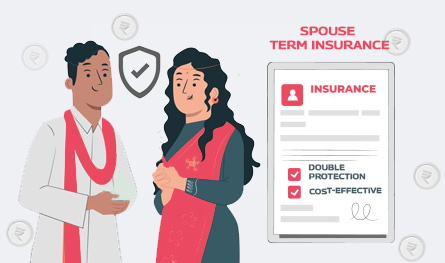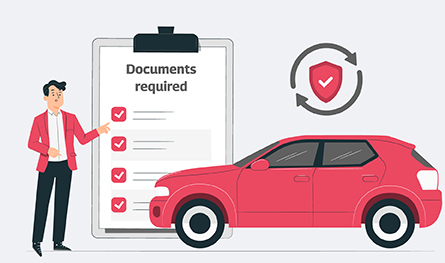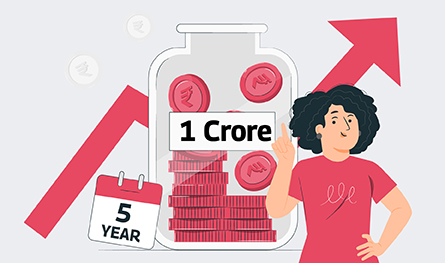Helmet Rules in India – Things You Need to Know


Why is it compulsory to Wear a Helmet in India?
There has been an increase in the number of accidents taking place in India, especially due to the involvement of two-wheelers. Most of these accidents lead to death or critical condition of the rider causing injuries in the neck, head, spine, and other parts of the body. The head injuries caused by accidents lead to the instant death of many riders. Hence, the government has made helmets compulsory for riders in India to reduce the rate of accidental deaths in the country.
So, it is compulsory to wear helmets in India to abide by the motor vehicle rules. If a rider rides a two-wheeler without a helmet, he/she has to pay a fine of INR 1000 or may be imprisoned for up to three months. The use of a helmet not just secures you against serious injuries to the head, but also ensures that you return to your family safe and sound after riding your vehicle. This way you get to take the necessary safety precautions at the time of riding a two-wheeler vehicle.
Traffic Laws in India About Helmets
Looking at the rising cases of bike accidents in India, the government has made it compulsory to wear a helmet while riding a two-wheeler vehicle. The Motor Vehicles Act of 1988 mandates the use of a helmet and at the same time has enforced new rules of severe penalties and fines.
- As per section 129 of the Motor Vehicles Act, it has been made compulsory for each individual over 4 years of age to wear headgear for protection while riding a two-wheeler. Below are some special laws announced in this regard:
- Section 129(a) says that the helmet used while riding should be sturdy and should be made of materials that offer maximum protection during accidents (if any)
- Section 129(b) says that if there is a pillion rider riding in the two-wheeler along with the driver, both of them should wear helmets with attached straps to hold the headgear tight and avoid it falling in the event of an accident
- Section 194D of the Motor Vehicles Act states that if a rider is caught riding a bike/scooter without a helmet, the person will be fined INR 1000. Also, the driving license of the person might be suspended for up to 3 months
- The law permits individuals belonging to Sikh families to avoid wearing a helmet while riding a bike if they are wearing a turban on their head
- Further, many RTO rules along with the Central Motor Vehicles Rules (CMVR) under Section 138 (4) (f) were introduced to aid two-wheeler riders in maintaining rules and regulations
- The government also makes it mandatory for every two-wheeler manufacturer to sell two helmets for the rider and the pillion while purchasing the vehicle. And, it is required for the rider to submit proof of helmet while registering the vehicle in the RTO. Failing to do so will get the request denied.
Which types of Helmets are not Acceptable in India?
Many people in India wear a helmet not to avoid injury but to avoid penalties. Hence, they use a half-helmet, which is a piece of protection that covers only a portion of their head rather than protecting the entire head. However, unlike earlier, wearing a half-helmet is no longer accepted as per the updated traffic rules or the new helmet rule in India.
Section 129(a) of the Motor Vehicles Act has laid down some rules and regulations regarding the helmet type that should be used while riding a bike. Hence, the Indian government together with BIS or the Bureau of Indian Standards has issued a notice to the producers of helmets to abide by the norms while producing helmets.
Here are some key features which must be taken note of while producing helmets:
- The helmet you wear must be at least 1.2 kg in weight
- The thickness of the helmet should be around 20-25 mm. It should be made from high-quality foam
- The helmets must have ISI stamps on them mandatorily as per the guidelines of the Ministry of Road Transport and Highways in India
- If a seller sells a helmet without the ISI mark, it will be regarded as a rule violation
- The helmet should have a transparent eye cover to make it easy for the rider to see while riding a two-wheeler
- Further, the helmets should pass the BIS tests, including absorption tests before they are sold in the market. The absorption tests check the helmet in terms of its performance in varied weather conditions
State-wise Laws and Penalties Related to Helmets in India
The table below details the laws and penalties in different states in India for not using helmets while riding two-wheelers. However, due to the protest of the passengers, many states in India created temporary helmet rules rather than the strict regulations that are mentioned in the updated rules of the Motor Vehicle Act.
| State | Penalty/Challan for not wearing a helmet |
| Gujarat | Gujarat state government has reduced the fine for not wearing a helmet to INR 500 from INR 1000 |
| Bihar, Haryana, Tripura, Assam | These states subject the two-wheeler riders to all penalties as per the updated Motor Vehicle Act |
| Uttarakhand | Uttarakhand has also modified the fine amount charged for breaking helmet rules under the motor vehicle act |
| Uttar Pradesh | U.P fines up to INR 600 for riding a bike or any other two-wheeler vehicle without wearing a helmet |
| Odisha | Odisha delayed the implementation of the updated rules under the motor vehicle act for three months due to arguments between traffic police and bike riders |
| Kerala | Kerala enforced the recent rules of the motor vehicle act. However, the rules had to be withdrawn because of opposition from trade unions and the public |
| Karnataka | Karnataka looks forward to Gujarat and wants to implement similar traffic rules. The state has reduced traffic fines as per public demand |
| West Bengal, Punjab, Chhattisgarh, Telangana, Madhya Pradesh | In these states, two-wheeler riders are still fined on the basis of the old traffic rules for not wearing a helmet |
FAQs: Helmet Rules You Need to Know in India
The key benefit of wearing a helmet is that it reduces the chances of serious head injuries. So, in case of a two-wheeler accident, the impact of the head injury can be absorbed by using a helmet. Since head or brain injuries are fatal in nature, if a person is not using the helmet, it exposes the head to critical injuries.
You should use helmets while riding a bike/scooter because it reduces the risk of serious brain injuries as well as death caused by falls or collisions
Section 129 of the Motor Vehicle Act makes it illegal and a serious traffic breach to ride a two-wheeler vehicle in India without a helmet.

Author Bio
Paybima Team
Paybima is an Indian insurance aggregator on a mission to make insurance simple for people. Paybima is the Digital arm of the already established and trusted Mahindra Insurance Brokers Ltd., a reputed name in the insurance broking industry with 21 years of experience. Paybima promises you the easy-to-access online platform to buy insurance policies, and also extend their unrelented assistance with all your policy related queries and services.
Other Motor Insurance Products
Latest Post

Marriage is built on shared dreams, countless compromises, and a commitment to protect each other through thick and thin. While love, trust, and communication form the emotional foundation of marriage, a little bit of financial planning doesn’t hurt either. This is exactly where spouse term insurance steps in — a simple yet powerful way to safeguard your future together.


Renewing a car insurance policy before expiration is crucial for car owners. A car insurance policy is not only mandatory for driving a car on Indian roads but also important to ensure the continuous availability of benefits under the policy. Learn more in this blog


When was the last time you thought about getting a life insurance policy? If your answer is “I will get to it someday”, you are not alone. Despite India growing as one of the fastest expanding economies, life insurance penetration across the nation has remained surprisingly low. Life insurance penetration fell slightly to 2.8% in FY24, down from 3% in the previous year.


If you are looking at investment policies offering INR 1 Crore in 5 years, we talk about some excellent plans in this post to help you choose the best one and reach your goal. However, it is important not to get swayed. Doing proper research and taking advice from financial or insurance advisors is important. Learn about such investment plan in this post.




.png)
